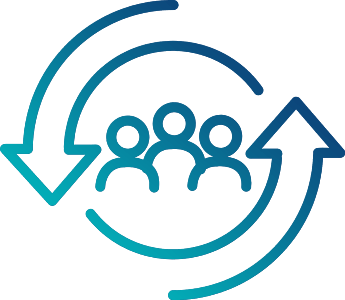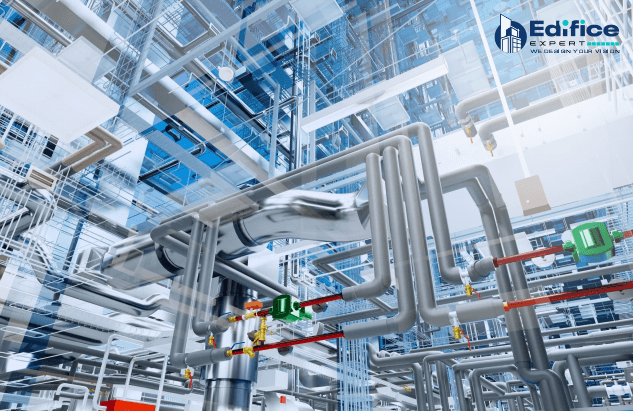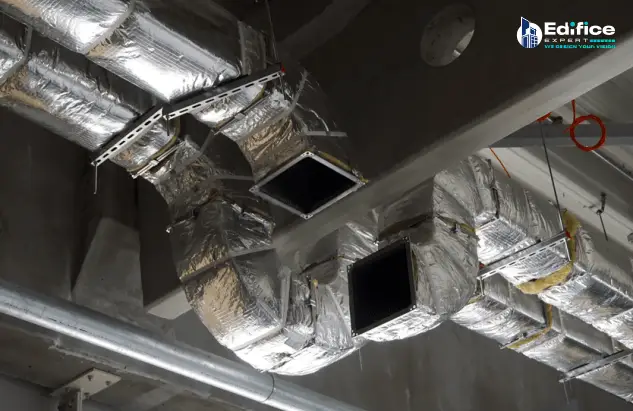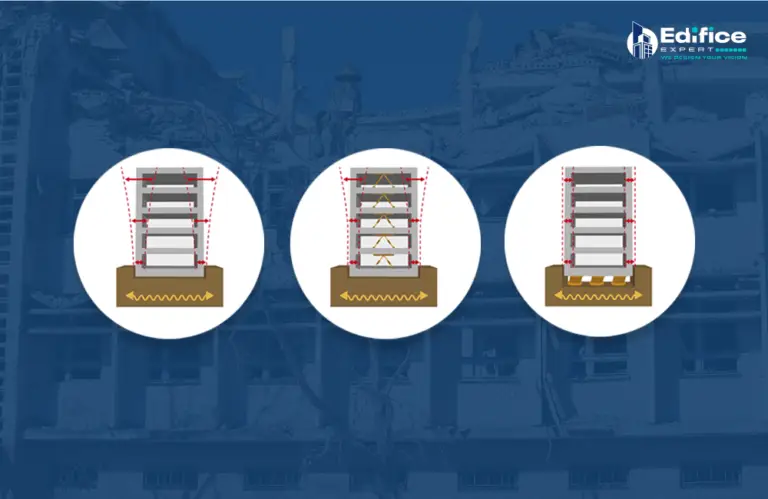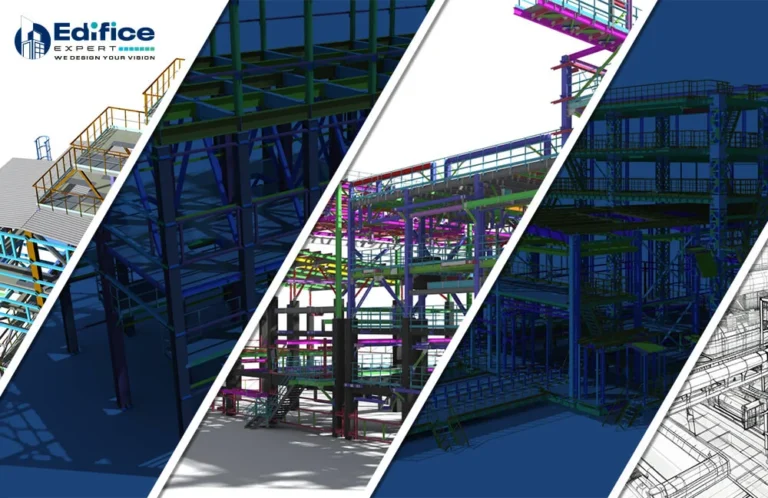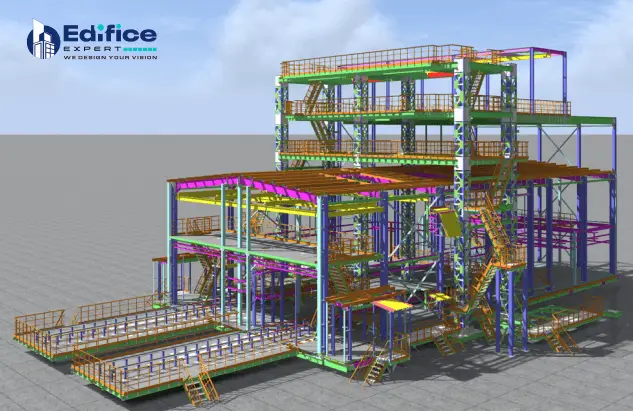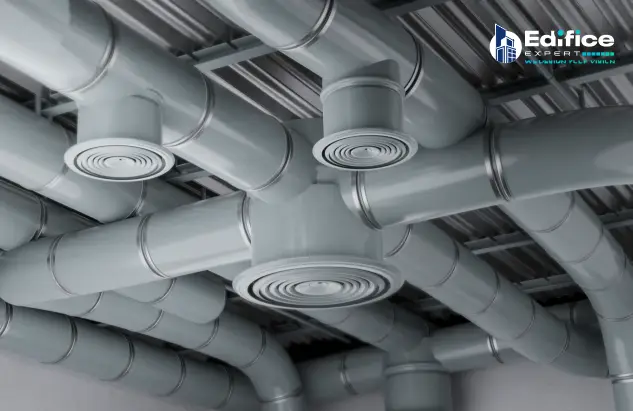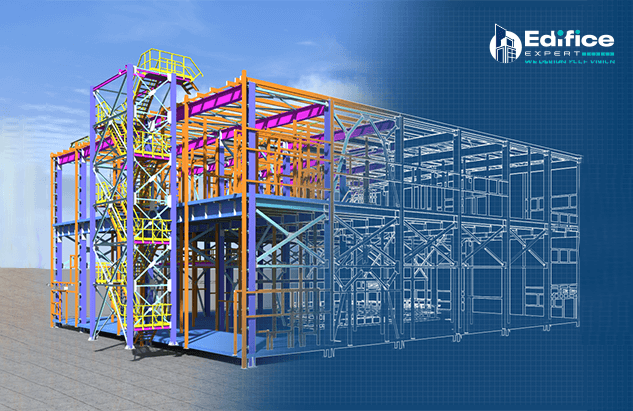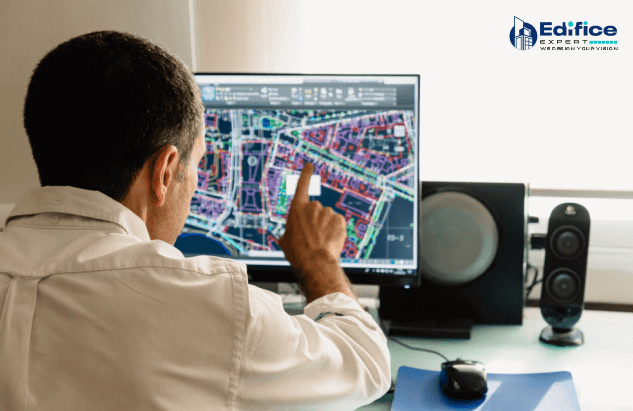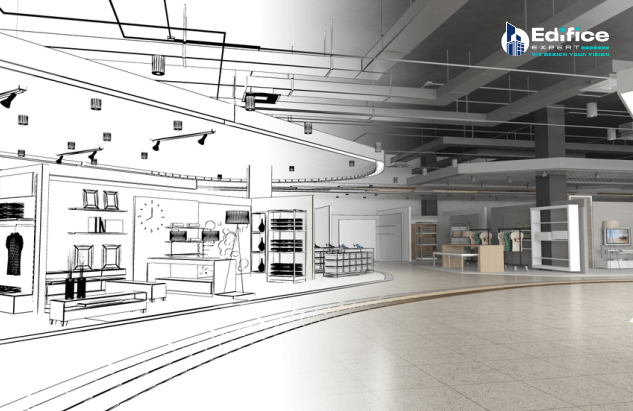Introduction
Fact around the world. The global green buildings market accounted for USD 565.33 billion in 2024 and is predicted to reach around USD 1374.2 billion by 2034, growing at a CAGR of 9.42% from 2024 to 2034, with the role of MEP design remaining constant.
MEP stands for Mechanical, Electrical, and Plumbing, the three disciplines that work together to ensure a building’s functionality, comfort, and safety.
In addition, MEP design involves planning and designing MEP systems for the building.
The mechanical components of MEP design include heating, ventilation, and air conditioning (HVAC) systems. The electrical aspects involve designing electrical wiring, lighting, power distribution, and emergency systems. Plumbing design encompasses planning water supply, drainage, and waste management systems.
Additionally, the construction sector majorly contributes to global greenhouse gas emissions, accounting for a substantial portion of energy consumption and waste generation. Sustainable MEP design, incorporating energy-efficient technologies and eco-friendly materials, will always minimize these impacts.
This blog will highlight the sustainable MEP practices and technologies being adopted in 2024 to create more energy-efficient, environmentally friendly, cost-effective buildings.
The Driving Forces Behind Sustainable MEP Design in 2024
As the world becomes more conscious of safety, energy efficiency, and environmental impact, the field of MEP engineering is changing consistently. Among the numerous challenges, dealing with sustainable MEP design regulations & building codes stands out as a significant concern.
Recent updates to environmental regulations that promotes sustainability in MEP design
1) Stricter Energy Efficiency Standards
It is assumed that buildings consume 32% of the total energy, residential buildings consume 24% and commercial buildings consume 8%.
Electricity and HVAC systems are the two essential systems that consume the most energy- the reason why the government has implemented stricter energy efficiency standards. These standards require buildings to use less energy, which helps reduce pollution and lowers energy costs.
2) Emphasis on Renewable Energy Integration
Implementing new regulations encourages the integration of renewable energy sources like solar panels and wind turbines into building designs.
This for businesses states that the MEP engineers need to plan for systems that can work efficiently with renewable energy sources. Ultimately, this will help buildings generate their power, reducing reliance on fossil fuels.
3) Enhanced Water Conservation Measures
Conserving water is another critical issue that needs attention.
Because buildings are now supposed to use water more efficiently, including “low-flow” fixtures and recycling water in the building.
In that context, MEP engineers must design plumbing systems that reduce water waste, which is essential for businesses that want to be environmentally responsible.
4) Adoption of BIM Technology for MEP Modeling
Building Information Modeling (BIM) technology is now strongly demanded & encouraged and, in some cases, required by new building codes. BIM technology will let MEP engineers create detailed digital models of buildings.
These models help plan and visualize how the MEP systems will work together, ensuring they are as efficient as possible. MEP Engineering Trends 2024 is becoming a standard practice for almost every building, making it easier to meet sustainability goals.
Building codes that promote sustainability in MEP design.
International Green Construction Code (IgCC)
The IgCC offers a detailed set of requirements that aim to reduce buildings’ negative impact on the natural environment significantly. These include solutions for energy conservation, water efficiency, and using environmentally friendly materials and resources.
Leadership in Energy and Environmental Design (LEED)
While not a code per se, but yes, LEED is definitely a widely recognized green building certification system that heavily impacts local building codes in USA.
At the same time, LEED-certified buildings must meet typical conditions and earn points in areas such as energy savings, water efficiency, CO2 emissions reduction, and improved indoor environmental quality.
Energy Star
Earning the ENERGY STAR means the system meets strict energy efficiency guidelines set by the U.S. Environmental Protection Agency.
Energy Star guidelines for MEP systems emphasize maximizing equipment performance to exceed baseline energy efficiency regulations.
This can focus on high-efficiency HVAC systems, plumbing fixtures that reduce water usage, and energy-efficient lighting solutions.
Green Globes
Green Globes is the USA’s commonly used green building certification program.
It analyzes buildings based on various standards such as energy efficiency, water conservation, indoor environmental quality, and resource management.
Green Globes has a user-friendly online assessment tool that helps MEP engineers track and improve their sustainability performance throughout construction.
Zero Energy Ready Homes (ZERH)
The Department of Energy’s Zero Energy Ready Homes program significantly pushes the construction of high-performance homes that generate as much renewable energy as they consume annually.
ZERH certification recognizes builders who utilize advanced technologies and design strategies for exceptional energy efficiency, indoor air quality, comfort, and durability.
One of the top green building trends for 2024 is the construction of Net Zero Energy Buildings (NZEB). NZEB is no longer futuristic; it is becoming the standard!
The Market Demand for Green Buildings
The Buildings Breakthrough announced at COP28 in December 2023 marks a pivotal development in the global approach to sustainable construction. This ambitious initiative aims to revolutionize the industry by making low-emission, climate-resilient buildings the standard by 2030. The extensive support from 27 countries, the European Commission, and 18 international initiatives underscores the widespread recognition of the urgent need to address climate change through tangible, impactful measures in the building sector.
Source – Press release on buildings breakthrough: A global push
In a recent global survey across multiple sectors, engineering and construction industries have made the most progress toward sustainability in the design phase, where 47% of respondents said sustainability is top-of-mind or a major concern.
How building owners and investors demand eco-friendly buildings pushes MEP engineers to adopt sustainable practices?
In recent years, there has been a growing demand for sustainable or “green” buildings. This trend is driven by both building owners and investors who care about the environment.
What Are Sustainable Building Practices?
Sustainable Building Practices 2024 are methods used in construction and MEP (Mechanical design, Electrical design, & Plumbing design) to make buildings friendly to the environment, and this practice includes using less harmful materials, saving water and energy, and minimizing waste.
The primary goal is to create buildings that use very limited resources and have a minimal impact on the planet.
A great example is a sustainable building, which might have solar panels on the roof, energy-efficient windows, and water-saving toilets.
How Building Owners and Investors Influence MEP Engineers to Adopt Sustainable Practices
1) Establishing Clear Goals Towards Green Buildings
Building owners and investors tend to set precise & specific sustainability goals for their projects.
Further, these goals include reducing energy consumption, minimizing water usage, and achieving green certifications like LEED. When MEP engineers know these goals right at the beginning of system design, they can easily meet “green building” targets.
This might involve using energy-efficient HVAC systems, low-flow plumbing fixtures, or renewable energy sources like solar panels.

Check out the top reasons for building green homes in the U.S. from builders & remodelers.
2) Financial Incentives and ROI
Investors are interested in the return on investment (ROI) that sustainable buildings can provide because green buildings tend to have higher market values.
Sustainable buildings often have lower operating costs. Why? They use less energy and water. To attract investors, MEP engineers are encouraged to use MEP design services incorporating energy-saving technologies and materials, ensuring the building is cost-effective and sustainable.
3) Meeting Certification Standards
Building owners now constantly require their properties to meet specific green building standards.
These standards, such as LEED (Leadership in Energy and Environmental Design) or BREEAM( Building Research Establishment Environmental Assessment Methodology), have strict regulations to be followed.
To comply with the same guidelines, MEP modeling helps create a detailed model in BIM that meets these requirements, ensuring the building is environmentally responsible. This includes energy-efficient lighting, the latest building management systems, and water-saving advancements. The need to meet these standards clearly states that sustainability is a top priority in the design process.
4) Long-Term Vision and Market Trends
Building owners and investors are looking at long-term advantages, including market trends toward sustainability.
As more businesses seek environmentally safe buildings, MEP engineers are influenced to adopt sustainable practices to stay competitive.
That is why MEP design services evolve to include the latest green technologies, helping buildings align with future market demands.
Examples of industries leading this demand.
1) Construction
The construction industry is at the forefront of the green building movement. 170 companies have already signed up to the World Green Building Council’s Net Zero Carbon Buildings Commitment, which encourages bold action on addressing emissions in construction.
This sector is the leading player in a significant portion of the demand for eco-friendly materials and energy-efficient technologies.
2) Healthcare
Undoubtedly, the healthcare sector relies on healthier environments through green building practices.
Hospital facilities are precisely executing the sustainable design to improve air quality and reduce energy usage, critical for patient care and operational efficiency.
3) Education
Educational institutions are focusing on sustainability by constructing green campuses, promoting healthier learning environments, and reducing energy consumption.
The best examples are – Harvard University and Stanford University, which have LEED-certified buildings.
4) Commercial
The commercial industry, which includes office buildings, retail spaces, and hotels, is one of the largest drivers of green building demand.
Office buildings are being constructed with energy-efficient designs, including energy-efficient HVAC systems and renewable energy sources like solar panels.
Key Sustainable Practices in MEP Design
Energy-Efficient HVAC Systems
HVAC systems consume approximately 15% of the total electricity generated globally.
HVAC systems, which include heating, ventilation, and air conditioning, are MAJOR contributors to a building’s overall energy consumption. The relation between HVAC usage and energy consumption is direct, with the intensity of use significantly influencing the expense of energy. These systems control the internal environmental conditions; they consume substantial energy, especially during extreme weather conditions when heating or cooling demand is high.
Putting things in a numeric manner, statistics have shown that HVAC systems account for about 40 to 60 percent of total energy use in commercial and residential buildings.
The advancements in HVAC technology
1) Smart Thermostats and Controls: Smart thermostats are specifically designed to improve energy efficiency by automatically adjusting the temperature depending upon the daily routines and weather conditions.
2) Variable Refrigerant Flow (VRF) Systems: VRF technology accurately controls the refrigerant flow of different zones in a building based on each zone’s specific demand.
3) Geothermal Heat Pumps: The geothermal systems utilize the earth’s stable temperature as the medium of exchange instead of the outside air temperature.
4) Solar HVAC Systems: Solar HVAC systems are designed to integrate solar power, using photovoltaic panels to produce electricity for HVAC units.
Water Conservation Strategies
According to the United Nations, half of the world’s population could live in water-stressed areas by 2025.
The innovations in plumbing design
1) Smart Faucets– This innovation is one of the most visible and adaptable. Smart faucets use sensors to detect when a user’s hands are under the faucet, automatically turning the water on and off.
This eliminates the need to manually operate the faucet, reducing the chances of leaving it running unnecessarily.
2) Low-Flow Fixtures—A low-flow fixture is a water-saving plumbing fixture, one of the best innovations designed to save water by having a lower water flow rate.
Some examples of these low-flow fixtures are faucets, showerheads, and toilets.
3) Leak Detection and Prevention—Leaks are the major source of water waste, and smart leak detection systems now use sensors placed throughout the plumbing system to monitor water flow and pressure.
4) Greywater Recycling Systems-The next remarkable innovation in sustainable plumbing is using greywater recycling systems.
Greywater is “clean wastewater from baths, sinks, washing machines, and other household appliances.” Rather than letting that water go to waste, it would be preferable to use it for reuse purposes such as toilet flushing, laundry, etc.
5) Water-Efficient Appliances—Water-efficient appliances has a huge role in sustainable plumbing.
Modern dishwashers, washing machines, and water heaters are some examples of appliances designed to use less water without compromising performance.
The role of rainwater harvesting and sustainable drainage systems (SuDS) in modern buildings.
Rainwater harvesting should be considered one of the most critical components of global integrated water management frameworks and is expected to be a major international policy issue in the 21st century.
Rainwater Harvesting in Modern Buildings
Practically, it is the whole process of collecting and storing rainwater from roofs or other surfaces for non-drinking purposes.
Examples are toilet flushing and cooling systems.
Sustainable Drainage Systems (SuDS) in Modern Buildings
Sustainable Drainage Systems (SuDS) are made to manage surface water runoff sustainably. Unlike traditional drainage systems, SuDS utilizes natural processes to slow down and control the water flow, allowing it to be absorbed, stored, or released.
The impact on modern buildings
Water Efficiency
A rainwater harvesting system collects and stores rainwater from roofs and other surfaces, which can be further utilized for non-potable purposes.
Flood Prevention
SuDS allows rainwater by letting it slowly soak into the ground or releasing it gradually into drainage systems.
Cleaner Water
Rainwater harvesting systems & SuDS can filter out pollutants from rainwater while improving water quality.
Supports Wildlife
Features like green roofs and rain gardens manage water and offer habitats for plants and animals.
Climate Resilience
Both systems make buildings more adaptable to climate change effects like heavy rain and heat.
Increased Property Value
With landscaping features, SuDS can improve the look of a property and increase its value.
Sustainable Electrical Systems
The rise of energy-efficient lighting and the use of renewable energy in electrical design.
Here, you will find a detailed discussion on these advancements:
LED Lighting
Energy Efficiency
Generally, LED lights use 90% less power than incandescent bulbs. This major drop in energy use has made LEDs a first choice for residential and commercial spaces.
Market Adoption
As of 2023, the global LED lighting market has reached a size of approximately $76.65 billion, indicating widespread adoption due to its energy efficiency and longer lifespan.
Smart Lighting Systems
Functionality
Smart lighting systems will significantly allow for automated adjustments based on conditions such as occupancy or natural light availability, further promoting energy savings.
Growth
The smart lighting market is experiencing significant growth, projected to reach USD 27.7 billion by 2026, driven by increasing awareness of energy conservation and advancements.
Renewable Energy: Solar Panels and Wind Turbines
Solar Panels
Capacity Increases
The solar industry also installed an impressive 11.8 GW of new solar capacity, bringing the total capacity to 200 GW in the United States.
Cost Reduction
The cost of solar energy has dropped since 2010, making solar installations more accessible and convenient for both residential and commercial properties.
Wind Turbines
Modern wind turbines can convert the wind passing through the blades into electrical energy, a significant increase compared to older models.
Wind turbines produce electricity by converting wind kinetic energy into mechanical power, which a generator then turns into electrical power.
This electricity must be integrated into the existing power grid.
Importance of smart grid technology and energy storage solutions.
Smart grids use advanced technology to monitor and manage electricity flow more efficiently, detecting problems and responding to them quickly to prevent outages. They also integrate renewable energy sources like solar and wind by managing their variable outputs and smoothly integrating them into our energy use.
Energy storage plays a crucial role in this process by holding excess energy when demand is low and releasing it during peak times.
This helps balance the energy supply throughout the day and reduces costs, as it lessens the need for costly energy production during high-demand times.
Challenges and Solutions in Implementing Sustainable MEP Practices
Cost Implications and ROI
Upfront Costs
Energy-Efficient Systems
Advanced HVAC systems, energy-efficient lighting, and renewable energy installations such as solar panels come with a premium. The cost will depend on the technology’s sophistication and the project’s scale.
High-Performance Materials
Using materials like improved insulation, high-quality windows, and energy-efficient appliances will cost more than standard counterparts.
Design and Implementation Costs
Designing integrated, sustainable systems will always ask for specialized skills and more complex planning and modeling. At the same time, this will require the use of tools like BIM, which can add to the initial costs.
Long-term Financial Benefits
Sustainable MEP systems will majorly reduce energy consumption, lowering utility bills.
The more durable and technologically advanced systems, the longer the lifespans and lower maintenance costs it has.
Some regions provide tax incentives, rebates, or grants for installing sustainable systems, which can further help mitigate upfront costs.
Buildings with sustainable systems are in constant demand, leading to higher property values and rental rates.
Strategies for Cost-Effective Sustainable Designs
Lifecycle Cost Analysis (LCA) :
LCA covers initial costs, operation, maintenance, and even disposal costs. It also helps understand the entire cost of ownership of a building or system over its expected life.
Energy Modeling:
The usage of energy modeling tools during the design phase can extensively simulate energy consumption.
Modular and Scalable Systems:
Installing a modular system that can easily be scaled as technology advances is a one-of-a-kind upgrade for your building needs while compromising on long-term sustainability goals.
Integrated Design Approach:
Engaging all the members( (Architects, Engineers, Contractors) involved in the design process ensures that the system is optimized for both performance and cost.
Performance Contracting:
Engage in performance contracting, where the installation costs of sustainable systems are financed from the energy savings generated over time.
Technical Challenges
Compatibility Issues
There is a high chance that the old or existing systems may not be compatible with newer, more energy-efficient technologies.
Structural Limitations
Old construction or buildings have certain boundaries that may prevent the installation of new systems. For example – Solar panels or modern HVAC systems, without having reliable & substantial structure, installing these advancements is impossible.
Space Constraints
Sustainable technologies like larger HVAC systems or on-site renewable energy generators will take up large spaces that may not be available in existing buildings.
Complex Retrofitting
Retrofitting buildings with advanced systems involves complex redesign and construction challenges, including working around or replacing outdated( OLD) wiring and plumbing.
Control Systems Integration
Integrating new technologies with existing control systems can be challenging, as older systems may not interface with modern, smart technology.
Cost and Disruption
Upgrading to sustainable systems can be expensive and disruptive to existing operations, which can be a significant barrier for many projects.
Regulatory and Code Compliance
It becomes mandatory to ensure that the new installations coordinate well with current building codes and regulations. Still, this thing has changed significantly since the original systems were installed, and it can be complex and costly.
Examples of how innovative solutions and tools, like BIM, are overcoming these challenges.
4D Scheduling and 5D Cost Estimation
4D Scheduling and 5D Cost Estimation in the BIM model will give time-related data for scheduling (4D) and cost information (5D), offering a broader view of the entire project timeline and budget and availing inefficient project management.
Sustainability Optimization
Utilizing BIM services will give architects and engineers access to tools for simulating energy use and other sustainability metrics, helping them consistently develop more energy-efficient and environmentally friendly designs.
Clash Detection
BIM brilliantly allows for the early detection of potential conflicts between different disciplines (like structural, MEP, and architectural), reducing costly on-site errors and rework.
Collaboration Across Disciplines
Interdisciplinary collaboration among architects, engineers, and builders is essential for embedding sustainable practices across all stages & disciplines of construction!
This collaborative approach ensures that designs are innovative, practical, and energy-efficient, leading to buildings that excellently meet environmental, economic, and social sustainability goals all at large.
Successful Implementation of Sustainable MEP Design
A 100,000 sq. ft. commercial office building constructed in the early 1990s in Iowa, USA, is experiencing high energy costs and inefficient HVAC (Heating, Ventilation, and Air Conditioning) systems. Read more to know how we fix it!
The Future of Sustainable MEP Design
Upcoming technologies that have the potential to revolutionize sustainable MEP design ;
AI-driven Predictive Maintenance :
Artificial intelligence will significantly predict and schedule maintenance for MEP systems. This approach will improve efficiency and prolong the equipment’s lifespan.
Smart Sensors and IoT:
Implementing Internet of Things (IoT) sensors to monitor real-time data on energy consumption, air quality, and system performance will further promote automated adjustments that optimize the building environment and energy use.
Advanced Materials:
Materials like Phase Change Materials (PCMs) for better thermal energy storage and aerogels for superior insulation can significantly reduce heating and cooling demands.
3D Printing in Construction:
3D printing will create complex, customized components for MEP systems at lower costs and with reduced material waste, promoting more sustainable construction practices in the future.
Energy Harvesting Technologies:
The advancement of developing systems that capture energy from human movement, solar heat on windows, or other sources, transforming buildings into energy-generating entities.
Predictions for the Next Decade
The insights into how sustainable MEP practices might evolve beyond 2024.
Regulatory Changes:
Increased strict and mandated regulations will likely demand higher energy efficiency and lower emissions in buildings more than anticipated in the coming future.
Market Trends:
The demand for green buildings will grow exponentially, driven by consumer environmental awareness and corporate responsibility.
Technological Advancements:
Advanced technologies like AI and IoT will be integrated into MEP systems, uplighting efficiency and performance.
Conclusion
The discussion surrounding the sustainable MEP design practices in 2024 highlights their KEY role in developing energy-efficient, resource-conscious, and environmentally responsible buildings.
Putting things like this together, integrating renewable energy sources, optimizing HVAC systems, and employing advanced technologies like Building Information Modeling (BIM) and sustainable MEP design practices contribute to lower operational costs and healthier living and working environments!
As stakeholders in the construction industry, it’s essential to identify the benefits of adopting sustainable MEP practices in your projects. Doing so will enhance your buildings’ efficiency and sustainability and positively affect the environment.
For expert guidance in implementing these practices, consider approaching Edifice Expert, a leading provider of sustainable MEP design solutions. Their expertise spans various sectors, including residential, commercial, and educational buildings, ensuring that sustainable MEP design is accessible to all.
Lastly, MEP engineers play a significant role in shaping a sustainable future. Their innovative solutions and commitment to eco-friendly practices are momentous in building a world that highly emphasizes environmental direction and resilience for generations to come.





